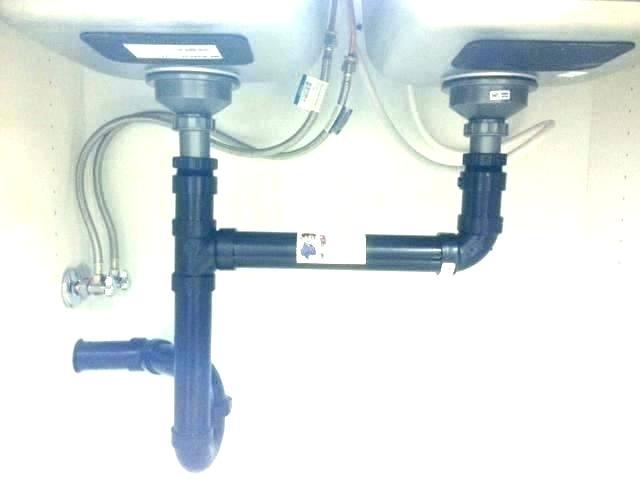Have you been searching for advice around Garbage Disposal Leaking From Bottom?

Waste disposal unit are crucial cooking area appliances that assist in dealing with food waste effectively. Nonetheless, a leaking garbage disposal can be a discouraging and messy issue to deal with. Thankfully, numerous leakages can be fixed easily with a few simple actions. In this article, we will talk about how to repair a leaking garbage disposal properly.
Intro
Waste disposal unit are installed under kitchen area sinks and are developed to shred food waste right into smaller sized pieces, enabling it to pass through the pipes system quickly. While these tools are generally reputable, leaks can occur with time as a result of wear and tear, loose connections, or damages to the system.
Typical Root Causes Of Leaks in Rubbish Disposals
Worn Seals and Gaskets
Seals and gaskets play a vital role in avoiding water from leaking out of the waste disposal unit. Over time, these parts can degrade, leading to leakages around the disposal device.
Loose Connections
The links in between the waste disposal unit and the pipes system can become loosened in time, creating water to leak out during procedure.
Splits or Holes in the Disposal System
Physical damages to the waste disposal unit, such as splits or holes in the real estate, can also cause leakages.
Identifying the Source of the Leakage
Prior to attempting to deal with a dripping garbage disposal, it is essential to recognize the source of the leakage. This can typically be done through aesthetic evaluation or by carrying out straightforward examinations.
Visual Examination
Evaluate the garbage disposal unit meticulously for any type of indications of water leakage. Pay close attention to locations around seals, gaskets, and link factors.
Evaluating for Leaks
One way to test for leakages is by running water with the disposal system and checking for any type of visible indications of leak.
Tools and Materials Needed for Repairing a Leaking Garbage Disposal
Prior to beginning the repair work process, gather the necessary devices and products, including a screwdriver, adjustable wrench, plumber's putty, substitute seals or gaskets, and epoxy or patching material for fixing fractures or holes.
Step-by-Step Overview to Dealing With a Dripping Garbage Disposal
Switch off the Power
Prior to trying any repair work, guarantee that the power to the waste disposal unit unit is switched off to prevent the risk of electric shock.
Locate the Leak
Determine the precise place of the leak and identify the reason.
Tighten Connections
Make use of a wrench to tighten any loosened links between the disposal system and the pipes system.
Change Seals or Gaskets
If the leakage is due to worn seals or gaskets, eliminate the old components and replace them with brand-new ones.
Patching Cracks or Openings
For splits or openings in the disposal system, usage epoxy or an appropriate patching product to secure the damaged area.
Testing the Garbage Disposal After Repair Service
When the repair work is total, check the waste disposal unit by running water via it to guarantee that the leak has actually been settled.
Preventive Maintenance Tips to Avoid Future Leakages
To prevent future leakages, it is important to perform regular upkeep on your garbage disposal. This consists of keeping it clean, staying clear of putting non-food products or hard items down the disposal, and regularly looking for leaks or various other problems.
Conclusion
In conclusion, dealing with a dripping garbage disposal is a relatively straightforward process that can be finished with standard devices and products. By following the steps detailed in this short article and exercising preventative upkeep, you can maintain your waste disposal unit in good working condition and prevent pricey fixings in the future.
What to Do About a Leaking Garbage Disposal
A leaking garbage disposal often goes unnoticed until you confront a sopping cabinet, a foul-smelling puddle, or an audible drip-drip-drip from the unit. The fix can be frustrating, too, because the leak can stem from a number of components in the system. Fortunately, with a little sleuthing, you can zero in on the leak and—depending on the exact location—stop the icky oozing and repair the component that caused it. Worst case scenario, if it turns out that the garbage disposal must be replaced, installing a new one is a reasonable do-it-yourself task for those with basic plumbing skills. Read on to keep the cash you’d otherwise hand over to a pro.
Prepare to find the leak
Prior to testing the garbage disposal for leaks, unplug it at the wall outlet and turn off the power from the breaker box to prevent electrical shock. Then insert a watertight sink stopper into your sink drain and wipe the unit dry with a clean cloth. In any handy container, mix a few drops of food coloring into a few cups of water, and pour the dyed water onto the sink stopper to help you locate the leak.
Investigate the source
the top, where the disposal meets the sink drain the side, where the dishwasher hose or main drain pipe connects to the disposal or the bottom of the unit Inspect each of these locations while gliding a light-colored rag over the unit; the dyed water will readily show on the rag and reveal the location of the leak. If a leak isn’t immediately apparent, remove the sink stopper and pour a few more cups of dyed water down the sink drain, then check for leaks again. Leaks near the top of the unit are more likely to show themselves while the sink is plugged, while side and bottom leaks are more noticeable while the sink is unplugged.
The metal sink flange that sits directly inside the sink drain is typically sealed around the top with plumber’s putty (a clay-like sealant) and then secured from under the sink with bolts. If the plumber’s putty deteriorates, or the bolts loosen, the flange can no longer form a watertight seal between the sink drain and the disposal—which could cause a leak at the top of the unit.
To reseal the leaky flange, you must first detach the garbage disposal. Start by loosening the screws securing the main drain pipe to the disposal, then loosen the screws in the metal clamp securing the dishwasher hose to the disposal and detach the drain pipe and dishwasher hose from the disposal. Loosen the screws in the mounting ring that connects the disposal to the metal mounting assembly beneath the sink, then pull down the disposal and carefully set it on a clean, dry surface. Loosen the bolts in the mounting assembly with a wrench, then pull down the mounting assembly and set it near the disposal.

We had been shown that article about Why Is from someone on another web blog. Don't hesitate to take the time to distribute this write-up if you liked it. We truly appreciate reading our article about Why Is My Garbage Disposal Leaking From the Bottom?.
Book A Free Estimate